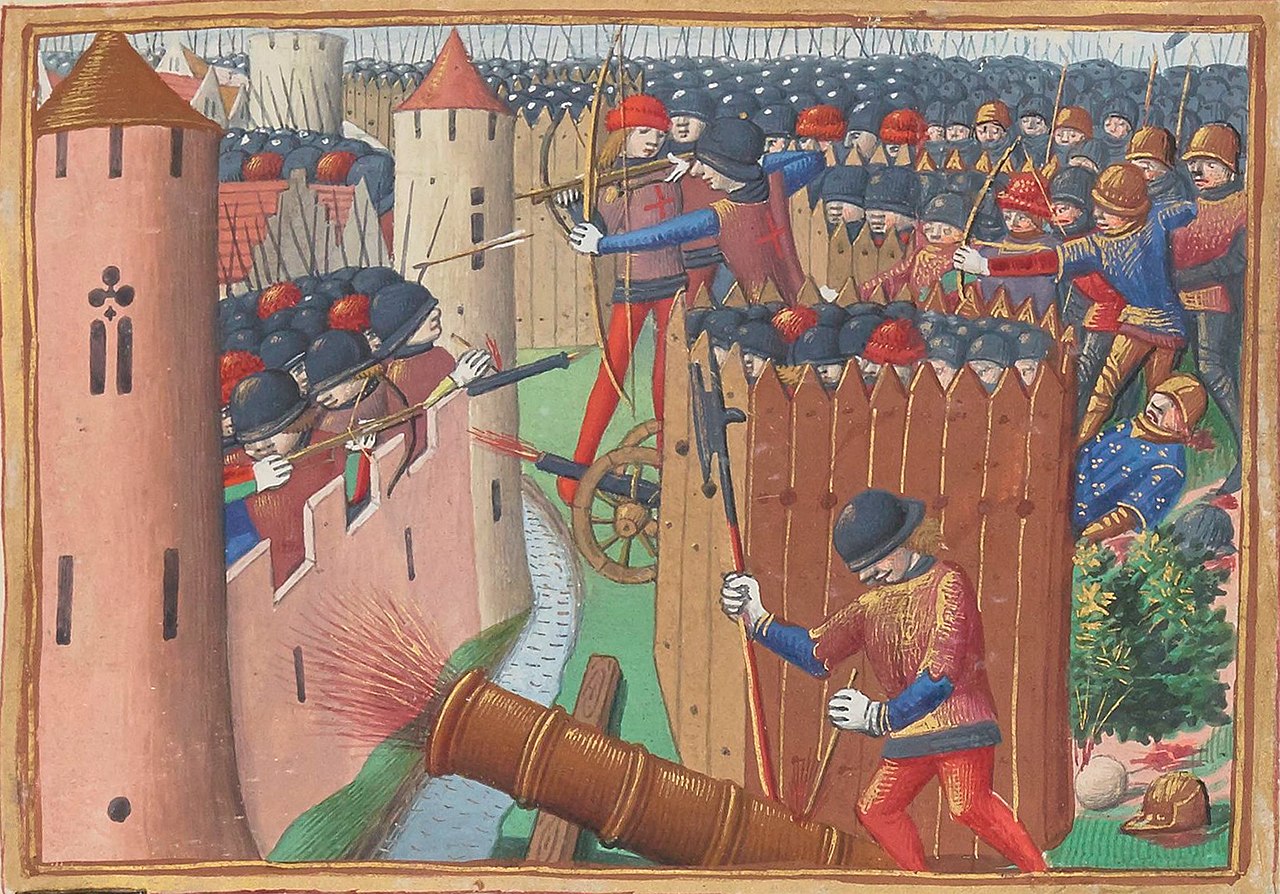 |
| Siege of Orleans. Wikipedia. |
General Principles
The smallest game-mechanical representation will be the unit, not the model. Units together will have hit points, attacks, skill and leadership defined collectively. Individual models will not be counted or removed during play, only the frontage and dimensions of the unit will matter for purposes of play.
Hail Caesar! handles units this way, and I'm shamelessly imitating them. After years and years of WFB, I'm totally and completely sick of removing models from unit trays.
Each Unit will be described by combining the following factors:
Size
Units can be of varying Size. Let's call them Small, Medium, Large and Huge. Small Units will be approximately 6" wide on the front. If players are using 28mm models on a 1" base, this makes a frontage of 6 models. Medium Units will be approximately 8" wide (around 8 models). Large Units will be approximately 10" wide (around 10 models) Huge Units will be approximately 12" wide (around 12 models).
Depth is less important than frontage: Units should be at least 2 infantry or 1 cavalry models deep; 3 or 4 will look better on the table.
Size will dictate the number of Attacks and Hit Points a unit possess.
Type
Units will be defined by their Type. The basic Types are Infantry and Cavalry, but there may be other Types, like Warmachine or Elephant (or Airplane or Flying Carpet or whatever.)
Type will dictate Movement rate, and may apply other special rules. It will also help dictate who has the Advantage in melee.
Weight
Weight indicates the relative level of armor and equipment the Unit carries. Weight can be Light, Medium or Heavy. Weight will dictate the Save value of a Unit. It will also help dictate who has the Advantage in melee.
I am more interested in defining a Unit's equipment by weight than by the specifics of armament, such as whether spears are superior to swords, or halberds to billhooks. Weight is also relative to the period. Hoplites, for example, are clearly Heavy in the Classic Period, but by the Hundred Years War, they might be only Medium compared to a Foot Knight.
Formation
Formation indicates the way the Unit fights and behaves on the battlefield, and the density and coordination of the unit.
Formed Units fight in close support of each other in discernible ranks and files. This is the default Formation.
Warband Units fight in a loose mass, without the discipline or coordination of Formed Troops.
Skirmish Units fight in a dispersed fashion.
Formation helps determine how a Unit can move. It will also help dictate who has the Advantage in melee.
Skill
Units have a Skill Rating, determining their level of training and experience: Poor, Regular, Veteran and Elite. Relative Skill determines the base to-Hit chance in melee. Absolute Skill level determines the base to-Hit chance in shooting.
Leadership
Leadership represents the ability of a unit to execute commands on the battlefield, and to maintain its cohesion in the face of disruption and casualties. Leadership is rated as die roll, ranging from 2+ to 5+.
 |
| Ugh. Shoulda worn armor. Wikipedia. |
Next up, basic combat mechanics.









No comments :
Post a Comment